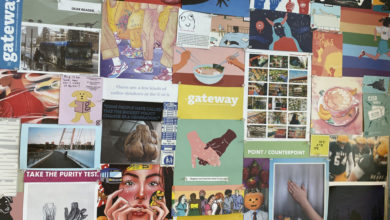Danielle Smith is wrong about the Women’s March
 supplied
suppliedIt takes a certain callousness to deny the reality in front of you simply because it doesn’t match with your narrative.
When Sonia Kont claims “we all (have) the same rights in society” in her complaints about the Women’s Marches being ideological and useless and is repudiated by Stephanie McLean, the Minister for the Status of Women, it is not because of the “identity politics” of feminism. It is because there are real social inequalities that persist despite legal improvements.
Danielle Smith, former Wildrose leader, criticized the Women’s March shortly after it happened, and mischaracterized the March in some important ways.
I find it particularly amusing that Smith views the inherent anti-Trump values of the Women’s March as something wrong, considering a prevailing aspect of Trump’s campaign was misogyny. Trump has established himself as an opponent to the goals of feminism, and anyone, regardless of political belief, who considers themselves a feminist or a supporter of women’s equality should see that as an affront. There are Republicans who have and still do despise Trump for a variety of reasons, so no you don’t need to be a Democrat or anti-Trump to feel welcome in the Women’s March, you just need to not be willing to overlook Trump’s constant misogyny in the way Trump supporters are willing to do.
I agree with Smith, however, that it is possible to be a feminist and not support abortion. It is indeed entirely possible to be personally opposed to abortion and to be a feminist, to be opposed to abortion and be in the Women’s March. There is a difference, though, between knowing you will never get or want an abortion, and wanting to make that decision for millions of other women. When pro-life groups advocate to make abortion illegal, to strip women of control of significant changes to their own body, those groups advocate for an reduction in bodily autonomy that runs contrary to values within the Women’s March, and feminism as a whole. It’s not as if there are not other ways to reduce abortion rates, like improving adoption services, sex-ed, and access to birth control. In a world where even just those three things were made significantly better, I’m sure there would be a lot less need for abortion (not that it would go away entirely).
Smith complains that we are too unwilling to solve gender equality issues in other countries and cultures. Firstly, this narrative is often used to ignore issues faced within our own nation. While it is entirely true that North America is better in general for women’s rights, that does not mean it is good enough. We should not be saying that is enough, and that it is time to focus elsewhere. Moreover, the narrative assumes that we don’t advocate for helping women in other countries, that we don’t fund international initiatives, that we don’t engage in negotiations that demand the improvement of these things, that we don’t support their feminist movements in their ambitions. This is entirely untrue.
I’m unsure what Smith read about the Ansari incident, but if that is her description of a bad date then I am so sorry for her loss. This “smear campaign” is really just the objective reality of how most men in powerful positions are, unsurprisingly, just not good people. It is almost as if the patriarchy is such that men are incentivised or left to believe that otherwise horrible things are acceptable.
Lastly, Smith mocks the issue that occured around “Pussyhats” as ridiculous. Women of colour complained, and rightfully pointed out, that the pink Pussyhats erased them because not all women have pink vaginas, and thus the symbol quite clearly only represented white women. Trans women and trans advocates rightly noted that using the vagina as a symbol of the movement was a form of biological essentialism, that the symbol inherently represented the idea that all women have vaginas which excludes women who are not cis and who don’t identify with the sex they were labelled as at birth. I’m doubtful that a white cis-woman like Smith really understands why it matters to women of colour and trans-women, but if hundreds of women are taking issue with it, then it is a real problem. Adopting a symbol that some of your movement (i.e women of colour and trans-women) can’t identify with is just a bad idea. Symbols have power, and when you are deciding on them it is important to consider what they mean and to who. It isn’t silliness, but the nuanced politics of advocacy, politics that have real and long term impacts as it affects who can feel engaged and who can’t.
The Women’s March isn’t to celebrate how far women have come, but it is to advocate for how far we still have to go. The march is to demand a world where we don’t have leaders who make fun of women, where women truly have control of their bodies and their future, where we don’t need to be divisive about domestic and foreign advocacy, where women can be safe regardless of where they are, and where we have broken down barriers between white women and women of colour as well as between cis-women and anyone else who identifies as a woman. So Smith might be sitting, and she is welcome to, but understand that it isn’t because we drove her out. It is because she simply no longer feels the need to stand beside us.




